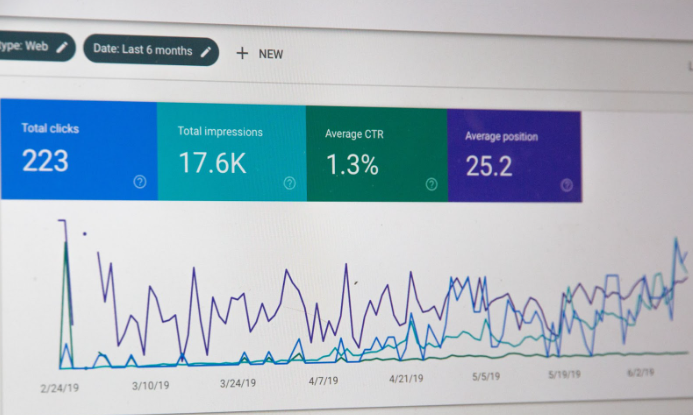
In the ever-evolving landscape of digital marketing, two critical strategies play a pivotal role in driving results and improving website performance: Conversion Rate Optimization (CRO) and Search Engine Optimization (SEO). While CRO focuses on maximizing conversions on a website, SEO aims to increase organic visibility and drive traffic. Finding the right balance between CRO and SEO is essential for achieving effective marketing conversion rates. In this guide, we will delve into the key aspects of CRO and SEO, explore their individual benefits, and provide actionable insights on striking the perfect equilibrium.
Understanding Conversion Rate Optimization (CRO)
Conversion Rate Optimization is a systematic approach that involves analyzing and optimizing various elements on a website to enhance user experience and boost conversion rates. The primary goal of CRO is to turn website visitors into valuable customers or leads. Here are some crucial components of an effective CRO marketing strategy:
User Experience (UX) Design
A well-designed website that focuses on intuitive navigation, clear call-to-actions, and optimized page layouts can significantly impact conversion rates. Ensure that the website is visually appealing, responsive, and easy to navigate across different devices. Pay attention to the placement of key elements, such as forms and CTAs, to encourage conversions.
A/B Testing and Data Analysis
Conducting A/B tests allows you to compare different versions of a webpage and identify the elements that contribute to a higher marketing conversion rate. Test various elements, such as headlines, colors, button placements, and content formats, to determine what resonates best with your audience. Use data analysis tools to gain insights into user behavior, identify bottlenecks, and make data-driven decisions for optimization.
Persuasive Copywriting
Compelling and persuasive copywriting can have a profound impact on conversions. Craft persuasive headlines, engaging product descriptions, and persuasive CTAs that resonate with your target audience. Use language that addresses pain points, highlights benefits, and creates a sense of urgency to encourage conversions.
Streamlined Conversion Funnel
Evaluate your conversion funnel to ensure a smooth user journey from landing page to conversion. Identify potential drop-off points and optimize the process by reducing form fields, simplifying checkout processes, and providing clear instructions. Eliminating unnecessary steps and reducing friction can boost conversion rates.
Exploring Search Engine Optimization (SEO)
Search Engine Optimization is a multifaceted strategy that focuses on enhancing a website's visibility and organic rankings on search engine results pages (SERPs). SEO helps drive targeted traffic to a website by optimizing various on-page and off-page factors. Here are key aspects of SEO:
Keyword Research and On-Page Optimization
Thorough keyword research helps identify relevant keywords and phrases that users are searching for. Implementing these keywords strategically in website content, meta tags, and headings can improve organic visibility. Optimize your website's meta descriptions, title tags, and URLs with relevant keywords to attract clicks from search engine users.
Technical SEO
Technical SEO involves optimizing website structure, URL structure, site speed, and mobile-friendliness and ensuring proper indexing by search engines. Addressing technical SEO issues enhances user experience and search engine crawlability. Optimize your website for mobile devices, improve page load speed, and ensure proper XML sitemap implementation to boost organic visibility.
Content Marketing and Link Building
Creating high-quality, informative, and engaging content is crucial for attracting organic traffic. Develop a content marketing strategy that focuses on creating valuable content, such as blog posts, articles, infographics, and videos, that align with your target audience's interests and needs. Coupled with effective link-building strategies, such as guest blogging, influencer outreach, and building authoritative backlinks, content marketing helps improve search engine rankings and organic visibility.
Local SEO
For businesses with a physical presence or targeting specific geographic locations, optimizing for local SEO is essential. Claim and optimize your Google My Business profile, ensure consistent NAP (Name, Address, Phone number) information across directories, and encourage customer reviews. Local SEO strategies like geotargeting keywords and creating location-specific landing pages can help improve visibility in local search results.
Social Media Marketing
Social media platforms play a crucial role in driving traffic and engagement. Integrating social media marketing into your overall strategy can complement both CRO and SEO efforts. By creating compelling and shareable content, engaging with your audience, and leveraging social media advertising, you can increase brand visibility, attract relevant traffic, and encourage conversions. Incorporate social sharing buttons on your website to make it easy for visitors to share your content, expanding your reach and potential customer base.
Striking the Right Balance for Effective Marketing Conversion Rates
To achieve optimal results, it's essential to find the right balance between CRO and SEO. Here are some actionable tips to strike the perfect equilibrium:
Align CRO and SEO Goals
Ensure that your CRO and SEO strategies are aligned with the overall marketing objectives. While CRO aims at boosting conversions, SEO focuses on driving traffic. Balancing both goals will help you achieve improved marketing conversion rates. Create a collaborative approach where the SEO team provides data on high-converting keywords and user behavior, and the CRO team implements optimizations based on that data.
Keyword Optimization for CRO
Consider incorporating high-converting keywords into your landing pages, CTAs, and persuasive copywriting. This synergy between SEO keywords and CRO tactics can drive targeted traffic and increase conversion rates. Analyze keyword performance data and identify keywords with high search volume and high conversion rates. Optimize landing pages to align with these keywords and improve the chances of conversion.
Data-Driven Decision Making
Use data analytics to make more informed decisions. Combine data from SEO and CRO efforts to identify patterns, optimize landing pages, improve user experience, and refine marketing campaigns. Utilize SaaS tools like Google Analytics, heatmaps, and user behavior tracking to gain insights into user engagement, click-through rates, conversion funnels, and bounce rates. Regularly analyze the data to identify areas of improvement and implement changes accordingly.
Prioritize User Experience
A seamless user experience is critical for both SEO and CRO. Whether you’re looking for web designer hire services or refining your existing site, focus on responsive web design, intuitive navigation, fast page loading speed, and persuasive content to enhance user experience and drive conversions. Optimize your website for mobile devices, ensure clear and concise messaging, and provide easily accessible contact information. Use analytics to identify user pain points, such as high bounce rates or low time-on-page, and make improvements to enhance user experience.
Test, Optimize, Repeat
Regularly conduct A/B tests to identify high-performing elements and optimize your website accordingly. Continuously monitor SEO metrics, conversion rates, and user behavior to refine your strategies for maximum impact. Test different variations of headlines, CTAs, page layouts, and pricing strategies to identify what resonates best with your audience. Use the insights gained from testing to make data-driven optimizations and improvements.
Personalization and Customer Segmentation
Personalization is a powerful tool for improving conversion rates and customer satisfaction. By segmenting your audience based on demographics, behavior, and preferences, you can tailor your messaging, offers, and website experience to resonate with each segment. Use dynamic content and personalized recommendations to create a customized user journey. By understanding your audience's needs and delivering targeted experiences, you can increase engagement and conversions. Combine personalization strategies with SEO efforts to optimize landing pages and on-site messaging to align with specific audience segments and search intent.
Conclusion
Achieving effective marketing conversion rates requires striking the right balance between CRO and SEO. While CRO optimizes website elements to maximize conversions, SEO drives organic traffic and visibility. By aligning goals, optimizing keywords, prioritizing user experience, and leveraging data analytics, marketers can find the optimal balance and unlock the true potential of their marketing efforts.
Remember, it's an ongoing process of testing, analyzing, and optimizing to ensure continuous improvement and success in the dynamic digital landscape. So, if you don’t have enough time, you can choose to hire a CRO agency. This will help you find the right equilibrium between CRO and SEO, leading to increased conversion rates, driving targeted traffic, and achieving your marketing objectives.


